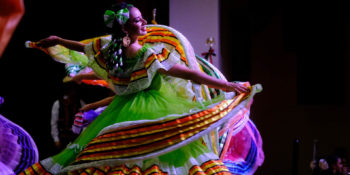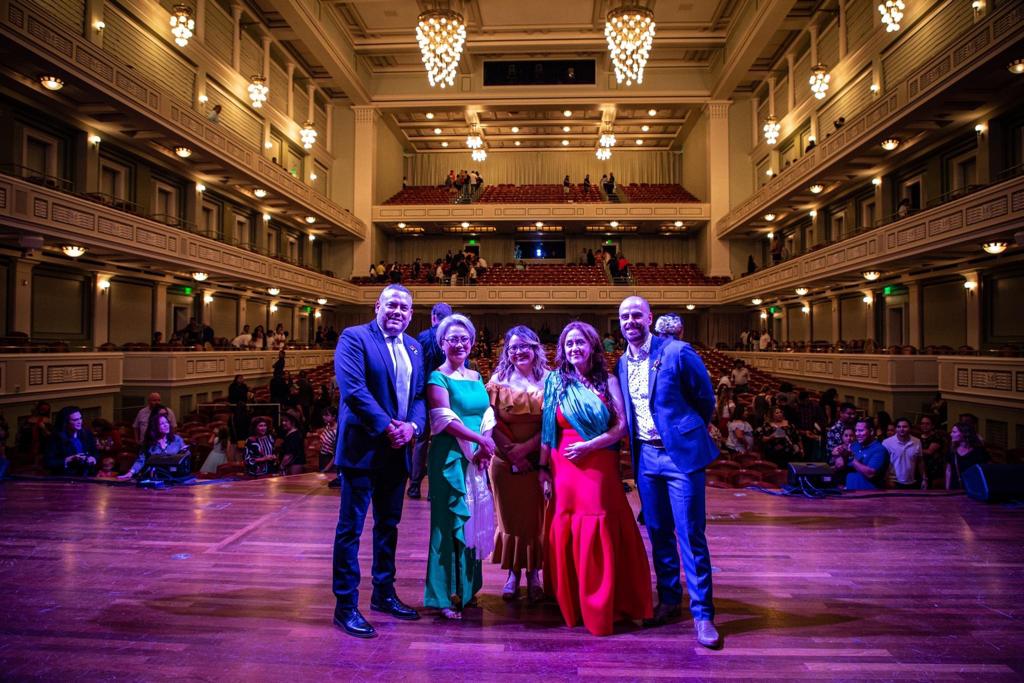from Franklin Light Opera
Laughter and Levity at the Franklin Light Opera
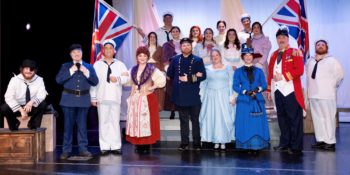
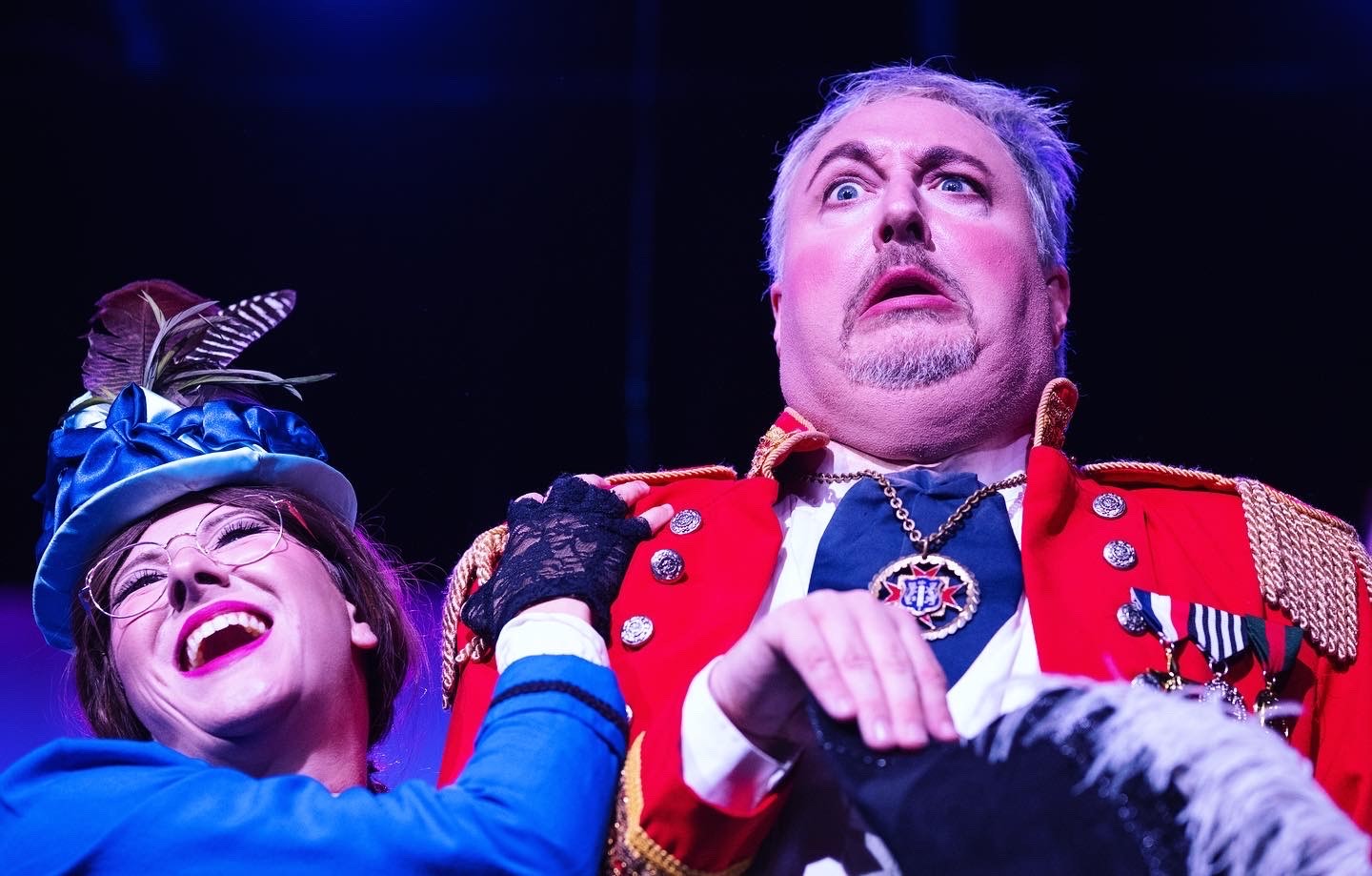
H.M.S. Pinafore by Arthur Sullivan and W.S. Gilbert has been a smash success ever since its premiere in 1878. After a marvelous performance by the Franklin Light Opera this September, it is easy to see why this piece has had almost a 150-year lifespan with no end in sight. The Franklin Light Opera (FLO) is one of the newer performing arts organizations in Middle Tennessee, having been founded in 2020 with the mission to “bring light opera, operetta, and classic musical theatre to audiences in and around Franklin, TN […] We strive to entertain and bring joy, serving as a source of “light” within the community.” Although I have only seen this one performance, it is easy to say that the FLO is fulfilling their mission and enriching the Franklin community.
H.M.S. Pinafore is quintessential Gilbert & Sullivan in so many ways – class struggles are treated with humor, the Royal Navy is mocked as an absurd institution, and most of the music is quite memorable – evidenced by the number of tunes I heard whistled as I walked back to my car. The Savoy operas of Gilbert & Sullivan, and particularly Pinafore, are part of a unique period in theatrical music. There are clear roots and indebtedness to the great operatic works of Mozart and Rossini with musical features like recitative, but the seeds of Broadway and musical theatre are in their nascent stages. Although Pinafore and Götterdämmerung are both operas, they are worlds apart.
The FLO production brought out the best of the show. The set was easily discernible as the Pinafore’s deck, complete with hoisted sails and the ship’s wheel at the helm. The ship deck had varying levels for the actors to climb and explore which made the production visually electric. The costumes, designed by Elizabeth Johnson, were excellent and added to the quality of the show overall. Director Jodi Marcum staged the whole show just as great Gilbert and Sullivan should be. The punch lines were delivered to raucous laughs and the action was always clear with a stage that was never cluttered.

The strongest part of the night was the music. The pit orchestra was just two instrumentalists – Michelle Carr on piano, and Kameron Myers on violin and they were expertly led by Music Director Mark Ring. Though small, this trio delivered an astonishing performance throughout the whole night. I hope that as the FLO grows, they are able to keep the high level of musicianship on display throughout the pit.
The vocal performances and talent that evening were a bit uneven, but nothing in the music was completely lost. Chad Jones played a marvelous Sir Joseph Porter, First Lord of the Admiralty, nailing the comic accent and the famous “When I was a Lad”song. His mere presence on the stage excited the audience, and part of that may be from how the audience normally sees him throughout the week: as a priest at a local Episcopal church. Nicholas Branson delivered a sensitive Ralph Rackstraw which paired nicely with Karen Dumont’s delicate Josephine.
The full chorus numbers were superb. Browsing through the cast biographies online, it seems that a majority of the chorus are current or recent graduates of local universities. There were some real stand out singers that I hope to hear more from in the future.
When H.M.S Pinafore originally premiered the run lasted almost 600 shows. It is a shame that the FLO’s production was only one weekend. Before that night’s production the audience was informed that the FLO is planning future productions of Die Fledermaus and The Pirates of Penzance, but I was unable to find any information online. If you would like to support light opera in Franklin, I would highly recommend attending one of their future performances and supporting their organization through tickets purchased and spreading the word about them. For more information, please visit their web
At the Schermerhorn
The New Season has begun, do you have your seats?
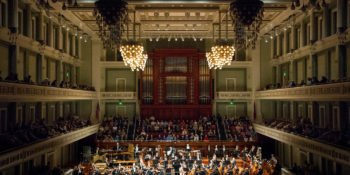
With 14 GRAMMY Awards, and 27 nominations, to its credit, the Nashville Symphony is an artistic giant existing quite literally adjacent to the neon lights of Nashville’s Honky Tonk Highway. When constructing a season, Music Director Giancarlo Guerrero offers that he keeps three things in consideration throughout the process: the audience, the orchestra, and the ways in which the Nashville Symphony can contribute to the region culturally. The 2023-2024 season is sure to continue making considerable contributions.
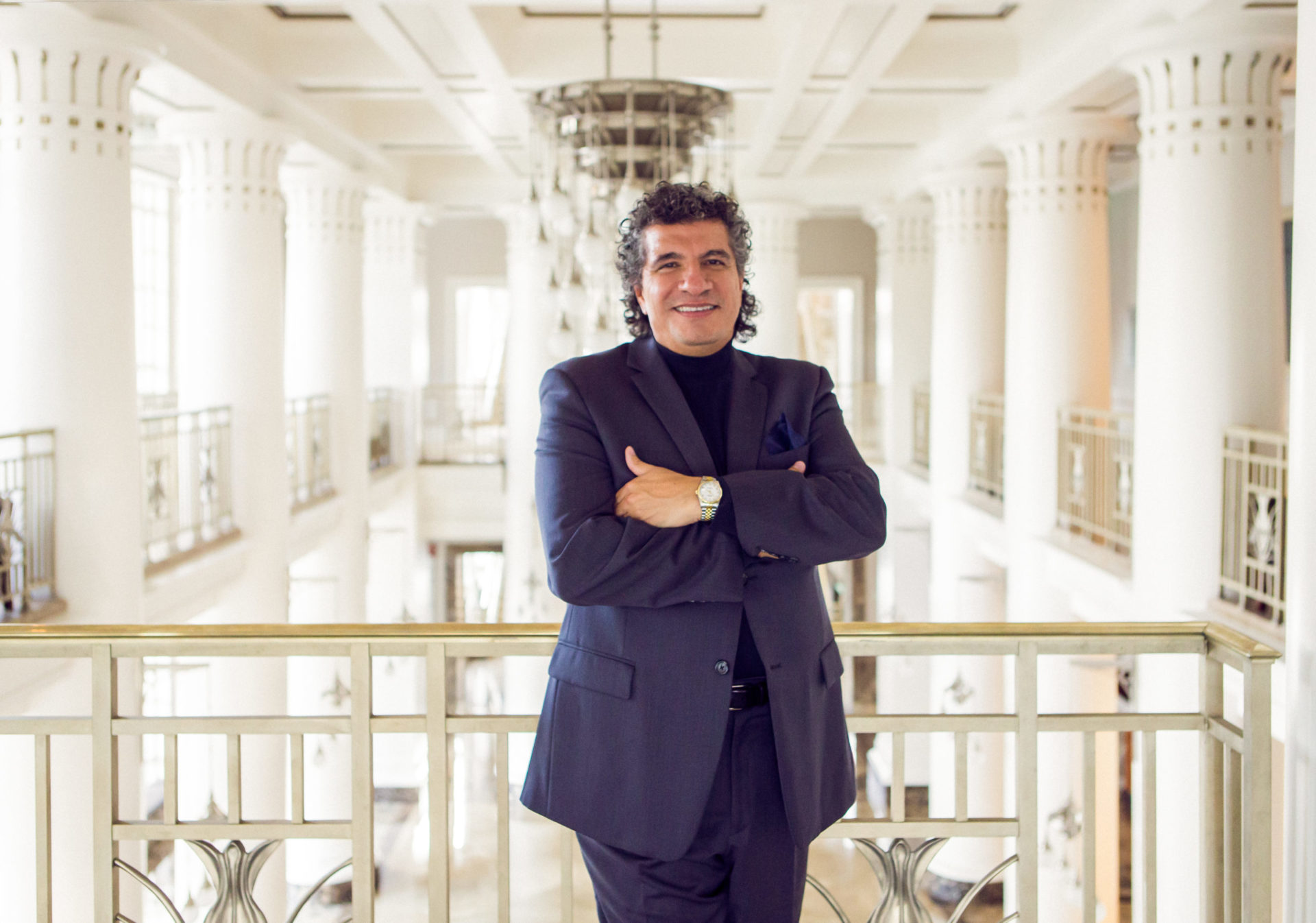
George Gershwin’s classical-jazz concerto for orchestra, Rhapsody in Blue, will be presented in three different iterations throughout the season – on opening night with Béla Fleck’s recreation on banjo, an even jazzier interpretation led by Tony DeSare and trumpeter-conductor Bryon Stripling as a part of the “Great Gershwin!” Pops concert in January, and finally in April with Jean-Yves Thibaudet featured on piano to close the centennial celebration of this work. The Classical Series will also continue the tradition of live recordings, with this upcoming season being host to four such experiences while presenting compositions of John Corigliano, Chick Corea, and Antonio Estevez. Pairings of perennial favorites with works created by under-represented voices is a thoughtful and important approach to the 2023-2024 season’s development. Speaking to this Maestro Guerrero submits that, “Presenting [under-represented] voices in context with well-known repertoire refreshes the classics and helps us hear them in a new light.”

The FirstBank Pops Series continues to be led by Principal Pops Conductor, Enrico Lopez-Yañez. The Nashville Symphony is clearly making an investment and an artistic priority by not only naming a principal pops conductor, but by collaborating with Trisha Yearwood, Jefferson Starship, Patti LaBelle, Frankie Moreno singing the music of Elvis, Amos Lee, and Tituss Burgess all in a single season. Similar collaborations will occur during the holiday season with the Nashville Symphony sharing the stage with Joss Stone, Boyz II Men, and Dave Barnes.
Jazz aficionados can experience Esperanza Spalding, the Kenny Barron Trio, the Duke Ellington Orchestra, and Marcus Miller throughout the season, too. Of the Jazz Series artists though, only Marcus Miller will appear alongside the Nashville Symphony. Four performances offered in The Ann & Monroe Carell Family Trust Family Series will engage young listeners, as should the Amazon Movie Series with the Nashville Symphony performing live soundtracks for Hocus Pocus, Home Alone, Encanto, Harry Potter The Deathly Hallows: Part 2, and E.T. The Extra-Terrestrial.
Aside from the music, the Nashville Symphony shares that it continues to consider ways in which to address concerns about parking near the vicinity of Schermerhorn Symphony Center – an announcement outlining new parking options is expected to be shared first with season ticket holders in Summer 2023. Pre-concert conversations will provide opportunities for ticket holders to gain insights into each Classical Series performance conducted by Maestro Guerrero. These concert enhancements are free for ticket holders and begin one hour before the first downbeat of a performance is to be given. And, of course, there are numerous other subscriber benefits.
I charge citizens living in the greater Nashville region to prove themselves deserving of such a robust and varied artistic season. Whether purchasing tickets or participating in the various free education and community engagement programs, we must patron such cultural gemstones before they cease to exist.
For more information about the 2023-2024 season visit https://www.nashvillesymphony.org/tickets/season-tickets/series-packages/.
Shakespeare Summer Festival Presents:
Much Ado About Something: 35 Years Of Summer Shakespeare
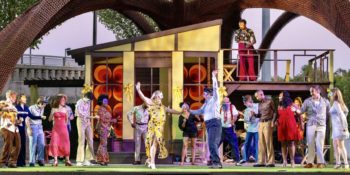
A local tradition for 35 years, the Nashville Shakespeare Festival kicked off this year’s Summer Shakespeare on August 31. I love the shift in scheduling; with Tennessee’s heat, I like to have my Summer Shakespeare lasting past the start of Fall. When we attended the show on Saturday, September 9, we were comfortably warm and later put on our hoodies while enjoying the cool night air. Don’t plan on wearing your lightest summer dress or shortest shorts; comfortable layers and a sharable blanket are the way to go. Although blanket seating and lawn chairs are comfortable, and the crowd of people looked quite cozy in their personal spaces, I enjoy the bleacher seating; you won’t have a person taller than you blocking your view, and you don’t need to pack and carry heavy, unwieldy items.
Attending at ONEC1TY is always easier than I think it will be; the signs for parking are clear, the garage is free, and there are volunteers with programs and stickers and donation buckets, ready to send you in the right direction. Food trucks and the “posh privies” fill one end of the green space. At the other end are the drinks tent (where we bought Yazoo’s Shake’s Beer, which is as delicious as I’d hoped) and the Nashville Shakespeare tent, where I bought tasty kettle corn among candies and merch. I was surprised at how cheap the concessions are; somehow this non-profit has less of a mark-up than national theater chains.
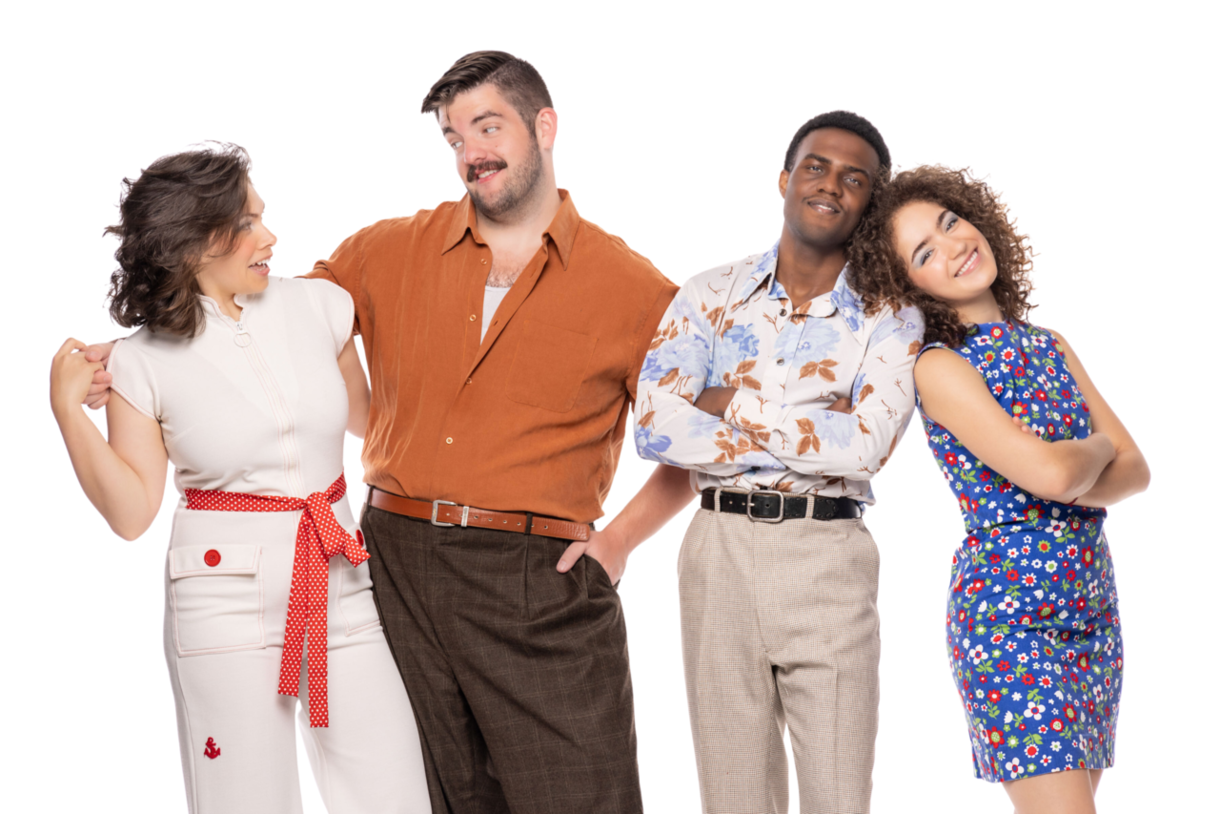
ONEC1TY gives the festival a more hip vibe than at their Academy Park location, but I’d be hard-pressed to have a strong preference for either. Both are well maintained, are easy to get a good view of the stage, and have free parking and easy accessibility. I will say that Academy Park does have fewer fire trucks or helicopters flying overhead, but those can’t spoil a performance.
Due to time constraints, I wasn’t able to attend the pre-show lecture or show, but those are well worth attending (and since the food lines are long, you can listen while waiting for your food).
This year’s show is Much Ado About Nothing, a comedy about two earnest and gullible people who fall in love, their cynical and sarcastic friends who also fall in love, and the difficulties they face as a malevolent character does his best to spoil everyone’s happiness. Since this is a Shakespeare comedy, someone impersonates another person and a death is faked. This play is one of his less convoluted comedies, so it’s not difficult to keep up (and if you do get lost, the program has a brief synopsis).
This performance is 70’s themed: under the program title it reads, “Welcome to Nashville, 1973.” The setting for this play is more than just costuming and decorations, both of which are fun and groovy (due to Costume Designer Alexis Grigsby and Scenic Designer Shane Lowery). A live band performs hit songs from the 70’s as incidental music with a great funky guitar played by Nick Bilski. The locations are renamed: the first lines of the play are changed from their European locales to “I learn from this letter that Don Pedro of San Diego comes this night to Nashville.” This actually helps, making it easier to keep locations in mind, and it allows for some fresh humor, including a joke about the “knaves of Smyrna.” Some of the slang or arcane Elizabethan references are changed to their 70’s counterparts, and two characters play Twister while having a conversation. The biggest alteration is the gender-swap of Governor Leanato to Governor Leanata (and their sibling from Antonio to Antonia). This didn’t alter that much, because the shift of more powerful women on stage is still restrained to the Elizabethan standards of the play. It did, though, make Leanata’s furious response to a slander against her daughter more interesting.

Andrew Johnson plays a marvelous Benedick, his self-confidence balanced by laid-back self-consciousness. There are (broadly speaking) two types of cynics: those who are cynical through naiveté, and those who are cynical in response to disappointment. His loud and confident witticisms are the first, cheerful and funny, making his eager and easy jump into love plausible; instead of a betrayal of his nature, they show to be his real self casting off the fear of vulnerability. Jakholbi Murry played Claudio, the eager and earnest friend of Benedick, who falls instantly in love with Hero, Leonata’s daughter. He gave Claudio an “aw shucks” energy and a teenage vibe, making his character’s unadmirable actions slightly more forgivable. Gerold Oliver is Don John, the villain of the piece, and his evil laugh is hearty and malicious. Alan Lee and Brian Webb Russell are boisterous and cheerful as Dogberry and Verges, the incompetent fools who manage to save everything.
Besides the humor of the writing and story, the play is full of slapstick, each actor getting laughs with their cartoony sneaking about and eavesdropping. The reason Shakespeare has been performed for so long is because he has a complete forehead; he’s both lowbrow and highbrow.
Directed by the Executive Artistic Director, Denise Hicks, this 35th season was a great time, and everything you expect from The Nashville Shakespeare Festival. Here’s to 35 more years!
Performances continue Thursdays-Sundays at ONEC1TY until September 24, and at Academy Park September 28-October 1. For more information, including pre-show lectures and performances, as well as the food truck schedule: Summer Shakespeare 2023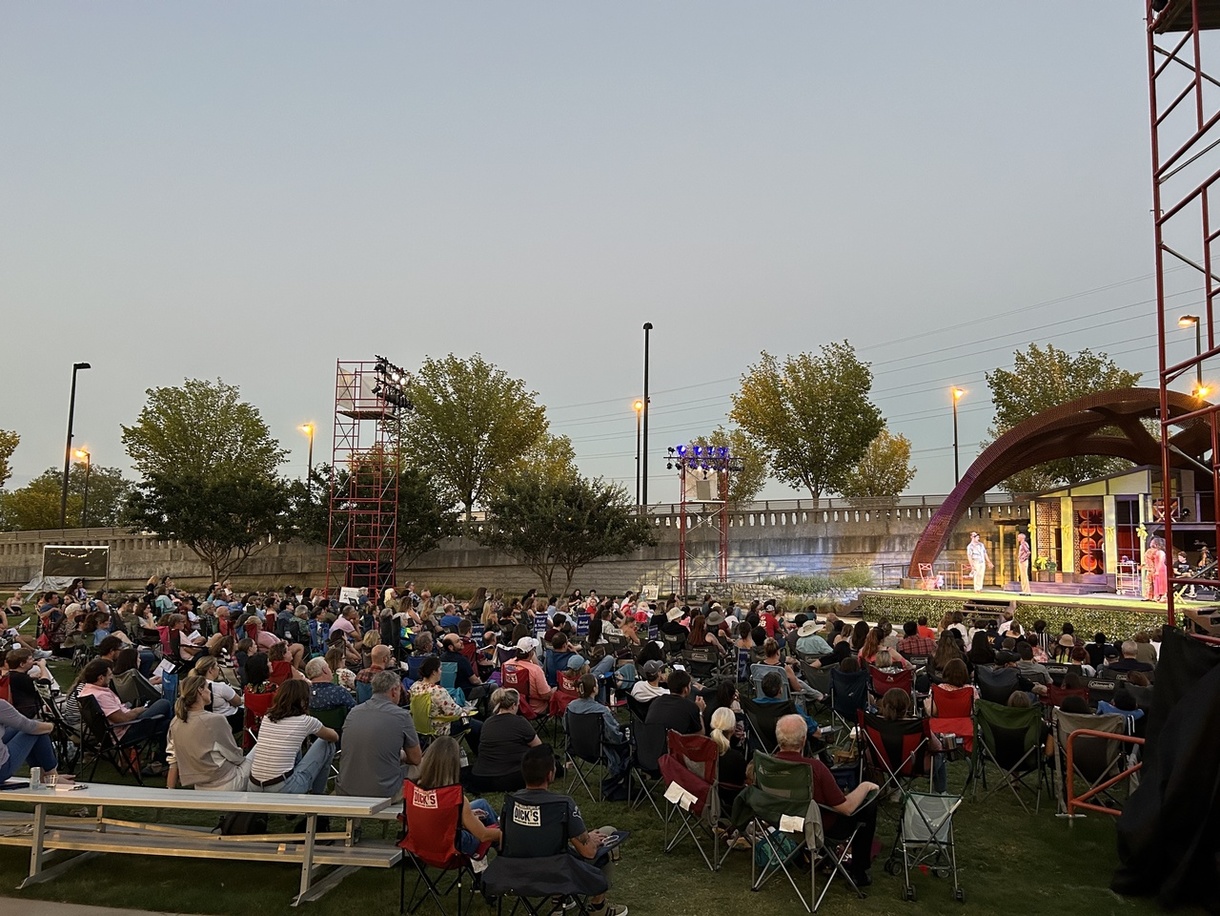
At the Schermerhorn
An Awful lot of Americana for Opening Night
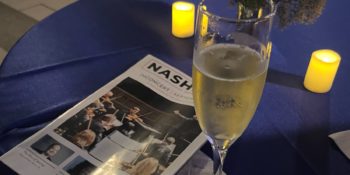
The new season is here! The Nashville Symphony held their opening night gala on September 9th with a concert that featured four pieces of American music. Two were written, arranged, and performed by celebrated banjoist Bela Fleck—his concerto The Impostor: Concerto for Banjo and an arrangement of George Gershwin’s Rhapsody in Blue in which the banjo played the piano part. The other two pieces included Adolphus Hailstork’s An American Port of Call (1985) and Aaron Copland’s Suite from Appalachian Spring (1945 orchestration). 
Adolphus Hailstork has an interesting relationship with the Nashville Symphony. As the composer related in 2019, Emeritus Nashville conductor Thor Johnson (1967-1975) gave Hailstorm his first commission on behalf of the department store J.C. Penny for which the composer wrote Celebration. Like Celebration, Hailstork’s Port of Call is amazing. Written, as the composer states, to depict the “…strident (and occasionally tender and even mysterious) energy of a busy American port city. The great port of Norfolk, Virginia […] was the direct inspiration.” Inspirations of both Gershwin and Copland can be heard in the great movement that is urbane and effervescent in its excitement. Here the Nashville brass were particularly bright and clear, opening the evening with remarkable zeal.
This was followed by Fleck’s The Impostor: Concerto for Banjo, composed 2010-11, dedicated to Earl Scruggs, and recorded and released by the Nashville Symphony in 2018. One imagines, as corroborated by hearing it, that the title refers to the presence of a banjo in a classical genre. Indeed, the program he delineated for a performance in Oregon states:
“A musician like myself can feel that way pretty regularly, even though the point of much of what I do is to attempt to find ways to fit naturally into many diverse environments. I often do feel like an impostor, and if anyone ever figured out the truth, I’m certain that I’d be ejected, immediately. So maybe the banjo player snuck into the orchestra with a disguise on (Infiltration), was pretty convincing that he belonged there (Integration), but at some point he let the cat out of the bag (Truth Revealed): He/I am a low-class banjo playing scuffler and should be tossed out forthwith! But that’s just one interpretation.”
Although, in the program notes, there is some effort made to point out that the work is “unlike a traditional string concerto” it is actually rather similar, especially from a formal standpoint. There is a clear double exposition (orchestra opens then soloist reiterates) and a moment of recapitulation. There are also clear influences, Gershwin’s woodwinds, as well as Bach and Beethoven are apparent at different moments. At the height of the first movement’s development, the imitative counterpoint becomes quite interesting.
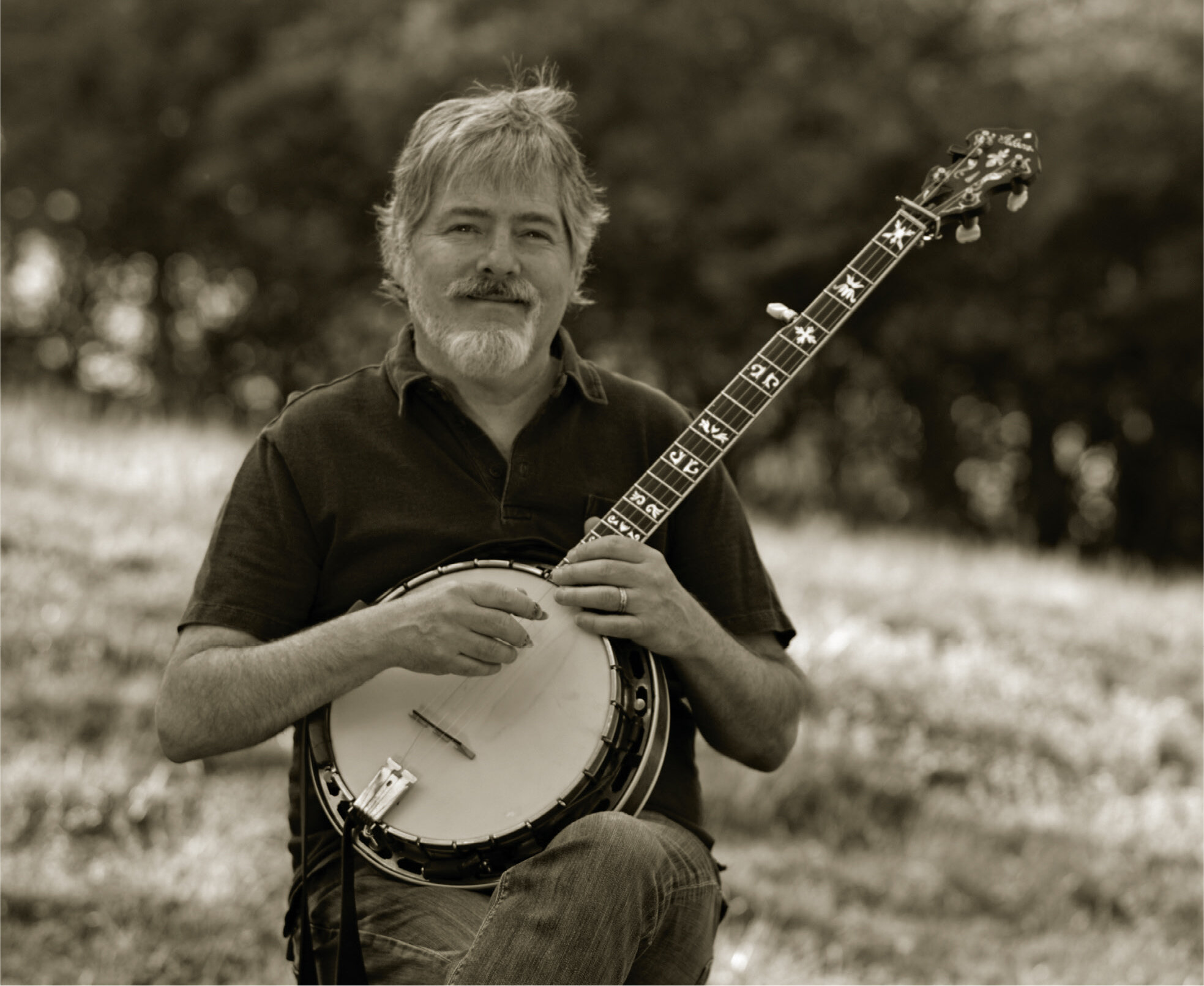
The swapping of motives with the orchestra becomes grows even more intense in the second movement, to the point which at one particular moment the banjo falls into a hocket with the basses. There is also a certain brilliance and pastoral nature to the orchestration that brings to mind Joaquin Rodgrigo’s Concierto de Aranjuez. Fleck’s virtuosity is unsurpassed, and while there are other interesting moments, this composition is remarkably idiosyncratic to his instrument: it is a perfect vehicle for that virtuosity.
After intermission the Symphony performed Copland’s great centerpiece of American Music, the Suite from Appalachian Spring as arranged from the ballet of the same title in 1945. I have heard this composition many, many times, but it still strikes my feelings when done right, and Saturday it was. While the theme from “Simple Gifts” was played quite well, it was the gentle framing of the suite, the “suffused light,” that brought nostalgic chills…something Maestro Guerrero is very talented at creating. Simply, it was the best performance of the evening.
The final work was Gershwin’s Rhapsody in Blue arranged by Fleck so that the banjo replaced the piano. It was a plainly difficult and virtuosic accomplishment, and one wonders how many living performers could have pulled it off. That said, I am not sure that the new version improved or altered Gershwin’s original work in any perceptibly positive way—just because one can do something, doesn’t necessarily mean they should. And when combined with the encore, which included themes from Star Wars (Darth Banjo?) and an obligatory rendition of variations on the theme from the Beverly Hillbillies, it made me wish I had gotten to hear the orchestra more that evening.
The Nashville Symphony has a long history of working with the country, popular, and folk genres that flourish in and nourish Nashville, but throughout one constant has remained. From the Nashville Platinum album forty years ago (which bankrupted the orchestra) to today, when they give up primacy to these musics and artists, their position as a classical orchestra is diminished. I understand that the “pops” concerts help to pay the bills, and in the absence of a separate pops orchestra, these concerts will continue, but I also hope that the Nashville Symphony will continue to be a stalwart protector of the excellent in the performance of American art music. With a new incoming concert master and the rumored departure of Maestro Guerrero, I fear that the powers that remain in the Schermerhorn will choose to move programs in the direction of becoming viral instead of remaining excellent. That aside, it looks to be a great season, opening this coming weekend with The Rite of Spring on September 14-16.
At the Nashville Rep.
9 to 5 was 10 out of 10
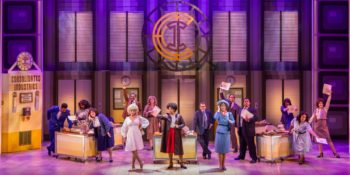
The movie this musical is based off of came out in 1980. My dad showed it to me in high school and I rewatched it last year, wondering how it has aged after the MeToo Movement. It’s as hilariously and tragically relevant as ever. I was curious about the musical adaptation: how would the odd comedy adapt to becoming a musical? Would the songs bring the story to a halt? Would good moments be cut? I don’t think there could have been a better adaptation; the spirit of the film, its charm and oddity and ridiculousness, were fitted to the Broadway format with skill. The book was written by Patricia Resnick, who wrote on the original screenplay, and music and lyrics were written by Dolly Parton, who both starred in the original movie and wrote its iconic title song. The musical is an expansion on the movie; there are more jokes, more layers to each character, and not one but two lusting villain songs.
The premise is simple: Franklin Hart, Jr. is a cartoon of a “sexist, egotistical, lying, hypocritical bigot” boss, who demeans the more experienced and competent Violet and constantly makes aggressive advances to his secretary Doralee (played by Dolly Parton in the movie). A third woman, Judy, joins the workplace after being divorced by her unfaithful husband. The women become friends and allies against their awful boss and accidentally commit some federal crimes on their journey to a better workplace.
Dolly Parton is not famous for being understated, and neither is this musical. The orchestra has a big, brassy sound (Conducted by Randy Craft), and the songs call for strong voices with big ranges. It’s impossible to single out any of the lead cast because every cast member sings with power both in the ensemble and in their solo songs. Most of the songs are comic (exactly to my taste) and express story and character elements; the energy of the music makes the plot develop with vibrancy. At the beginning and end of the show a screen shows a recording of Dolly Parton as she gives the introduction and the epilogue, and what could be annoying turns out simply charming; who’s more likable and beloved than the woman who refused a statue at the Tennessee Capitol and whose philanthropy sends children (including mine) free books in the mail?
The set, done by Gary C. Hoff, is large and decked with colorful strips and panes of lighting, done by Dalton Hamilton, making the use of the windowed upper story of the set for silhouettes in ensemble numbers. The vibrancy and variety of color make the musical pop in a satisfying way you wouldn’t expect from a workplace drama. Lauren Yawn’ props work well with the set’s fantastic color scheme, making what could be a drab office into a pleasing and colorful space. I’m sure everyone else in the audience also wanted to play with the classic typewriters and telephones.

Choreographer Allison Little’s work is excellent; the large ensemble is kept busy. Big dances fill the show, as do frequent costume changes into Lori Gann-Smith’s funny and varied costumes: top hats and tuxedos to rhinestones to business casual.
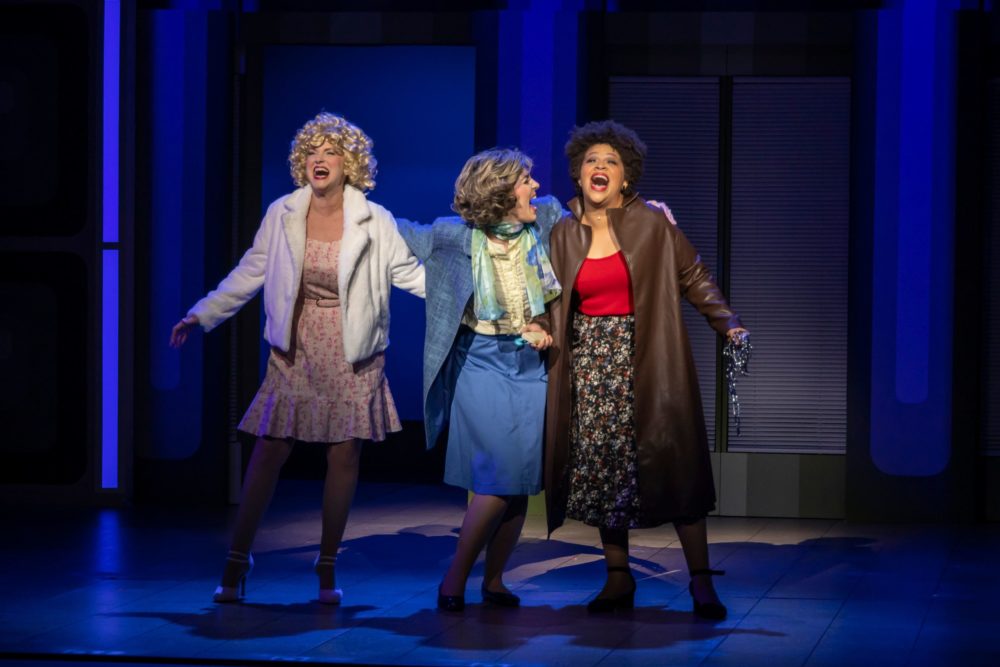
Violet, Doralee and Judy are played by Allyson A. Robinson, Megan Murphy Chambers, and Mariah Parris, respectively. They are fantastic: their rapport, laughter and ambitions all come across perfectly. Each of them has comic timing, a heart for their character’s struggles, and a beautiful voice.
The two supportive men in the show are played by the likable Jonah M. Jackson and Justin Merriel Boyd. The villains of the show, Franklin Hart, Jr. and his minion Roz, are a blast. Geoffrey Davin as Franklin Hart, Jr. has Dabney Coleman’s (the original villain from the movie) energy and smarminess (and even sounds like him), and is delightfully hateful with a turn for physical comedy. Roz has her role expanded in the musical, the song about her unrequited lust for Hart ending with six lookalikes dancing around her. Evelyn O’Neal is incredible in the character, making her every moment horrid and hilarious, prompting a man sitting to my left to turn to his friend and whisper, “I love her.”
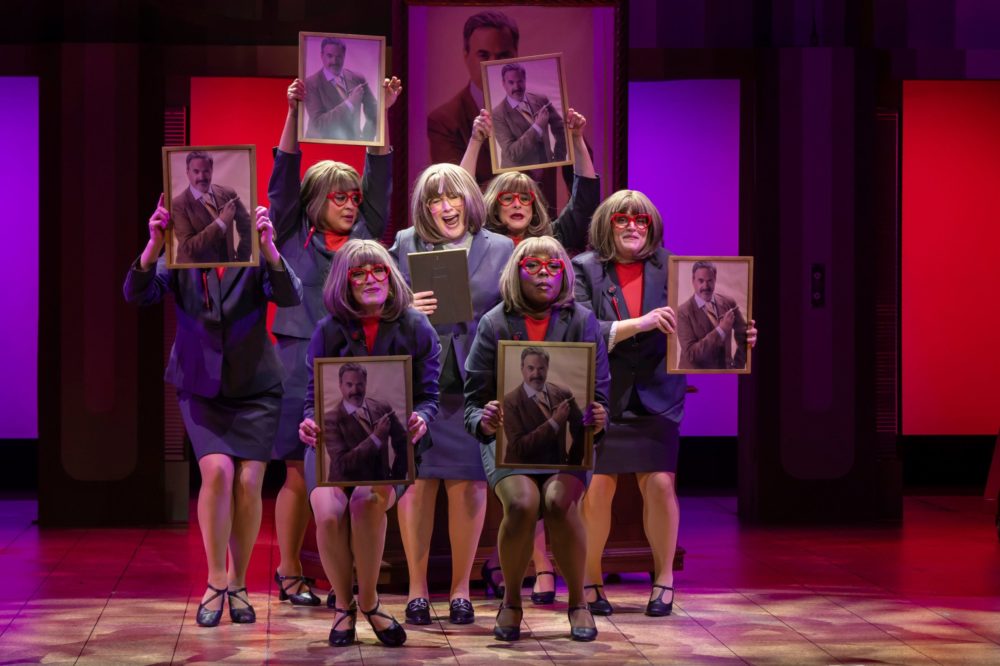
I’ve never attended a Nashville Repertory Theatre show where the audience wasn’t engaged and excited to be there, but I hadn’t seen this level of excitement at an opening night before. The majority of the audience seemed to be in their twenties and thirties. They clapped after every scene, even ones of brief dialog, and laughed at everything. The actors frequently had to pause and wait for them to finish laughing before they could continue with their lines.
Director Beki Baker did a fantastic job leading an excellent musical for the Nashville Repertory Theatre’s opening show of their 23-24 season. They couldn’t have picked a bigger or more exciting way to start, and I’m excited to see more of her work and more of their shows!
9 to 5: The Musical is showing September 8-17. For tickets and showtimes: 9 to 5 | TPAC
For more information about the Nashville Rep: Nashville Repertory Theatre
At the Nashville Rep.
Nashville Repertory Theatre Performs Dolly Parton’s 9 to 5: the Musical
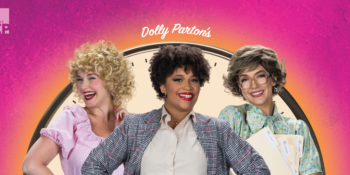
Nashville Repertory Theatre is back at TPAC, opening their 39th Season with the 9 to 5: the Musical. It’s based on the classic 1980 comedy film featuring the eponymous song in the title sequence, written and performed by Dolly Parton. If you missed the movie and when the song went viral a few years ago, here it is: https://www.youtube.com/watch?v=UbxUSsFXYo4. The film is odd, hilarious, relatable, and unfortunately still relevant. This musical adaptation was written by one of the movie’s original screenwriters, Patricia Resnick, and the songs are by Dolly Parton.
The musical follows the journey of Doralee, Violet, and Judy, three women who unite against their sexist, lying, hypocritical, egotistical, bigoted boss. Fueled by a shared desire for change, the trio embark on a mission to take back control of their lives, and which quickly spins out of control.
“What I love most about this production is the enormous fun of the show – the incredible performers, big dance numbers, and gorgeous designs – but with a deep message: we are empowered in our unity, and we can change things that aren’t right,” says director Beki Baker, who previously directed A Christmas Carol and the REPaloud of The Revolutionists.
9 to 5 the Musical will be at the TPAC’s James K. Polk Theater September 8th to 17th. For details regarding tickets and performance schedules visit www.nashvillerep.org.
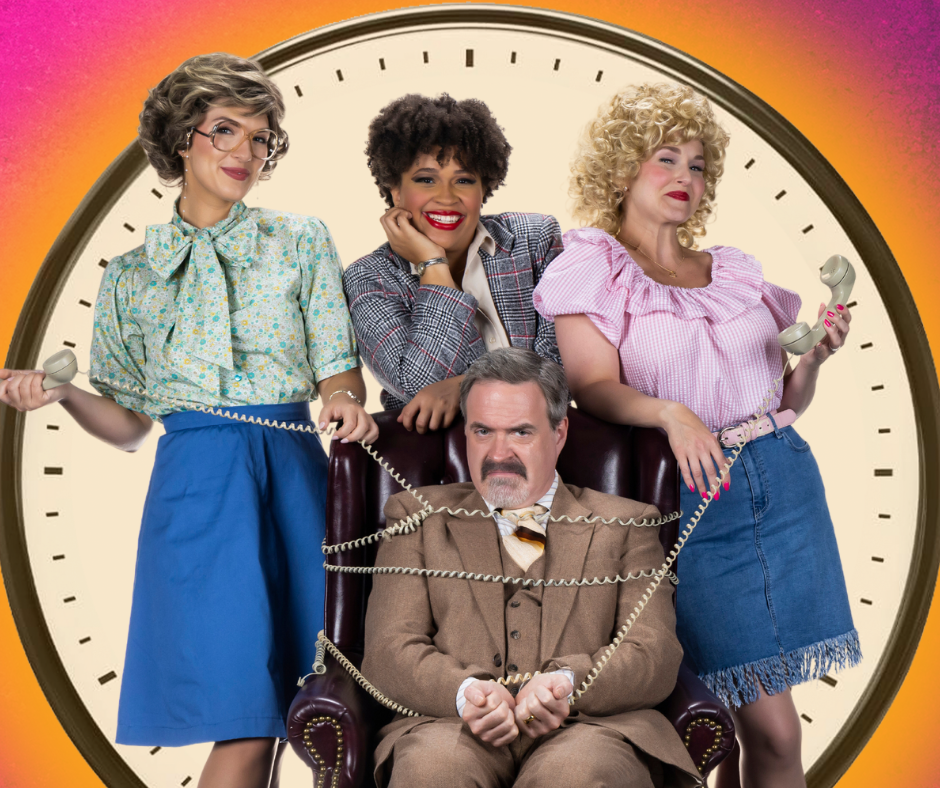
Coming to the Schermerhorn
Perry, Stravinsky and Ohlsson’s Brahms at the Schermerhorn

On September 15, the Nashville Symphony will present a concert featuring Igor Stravinsky’s Rite of Spring, Julia Perry’s Short Piece for Orchestra and Johannes Brahms’ First Piano Concerto performed by American Pianist Garrick Ohlsson. It looks to be a wonderful night in Nashville!
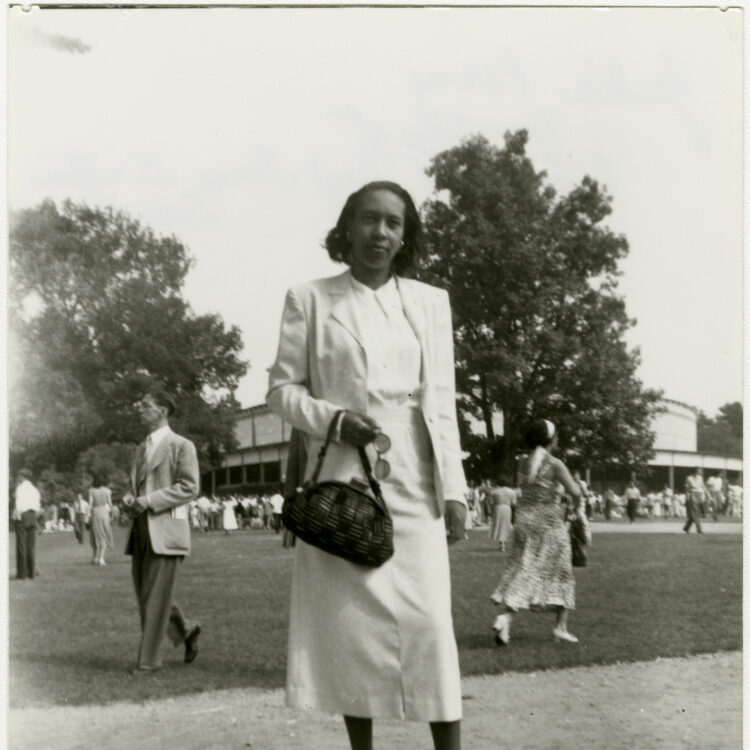
Julia Perry (1924-1979) was an American composer from Kentucky who was known for combining her neo-classical compositional techniques with musical styles rooted in her African American heritage. Studying at Westminster Choir College, Julliard Conservatory, and in Tanglewood, in 1952 she travelled to France to study with Nadia Boulanger, after which she went to Italy to study with Luigi Dallapiccola (who she had already studied with before Paris). While in Italy, her Short Piece for Orchestra (also known as her Study for Orchestra) was premiered.
The work is a mid-century masterpiece in five movements in which the opening firestorm returns twice after being interrupted first by a lyrical section and later a lento section. In particular, the lyrical section brings to mind the refrain from Arnold Schoeberg’s “Enthauptung” from Pierrot Lunaire, however it is much more neo-classical than expressionist; at this point in her career Perry was concentrating on the European abstract scene over the musical styles of her ancestry (she would return to these later in her career). Wonderfully, the first recording of it, by William Steinberg and the New York Philharmonic is available on Youtube here.
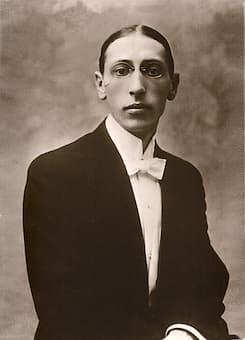
The Rite of Spring (Le Sacre du printemps) was the third of Stravinsky’s three primitivistic masterpieces for the Russian Ballet in Paris at the beginning of the last century. Designated as “heavy metal” by Maestro Giancarlo Guerrero, with its polytonal “powerchords” and synchopated “head-banging” rhythms, one can see what the Maestro is talking about. Its premiere is still famous for the disturbances from the audience, most likely focused on Vaslav Nijinsky’s choreography, which depicted the famous dancers in primitive costume and distinctly gauche and inelegant form as they danced a Russian primeval spring sacrifice ritual. The piece, which is perhaps the 20th Century master’s most well-known, is marked by many of his compositional characteristics, the constant “tick-tock” rhythm, syncopated accents, sharp contrasts in texture and dynamics as well as an atonal organization and alternative scales (octatonic in particular). Theoretical jargon aside, as the Maestro also notes, the piece sounds every bit as authentic as it did a century ago.
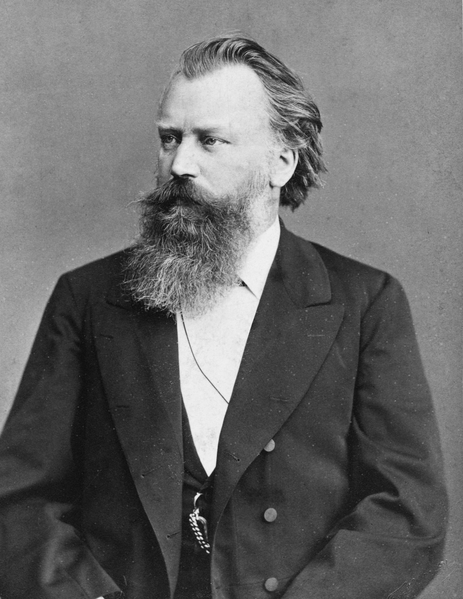
In 1970 Garrick Ohlsson became the only American born pianist to win the prestigious International Chopin Piano Competition. He is a noted master interpreter of many romantic composers, in fact he just recently released a complete cycle of Beethoven’s concerti, and is known for having a repertoire of over eighty concerti, not least of which is Brahms’ first which will be heard at this concert.
Brahms began working on his first concerto in 1854, at which time it was a piano duo. During its long compositional evolution, the work would be conceived as a symphony before Brahms finally settled on it as a Concerto. This evolution is apparent in the remarkable first movement which opens with a tutti statement rife with all the splendor of any of Brahms other symphonies. The second movement, provides a respite after the thunderous first movement seems to reach into the spiritual; About it, Brahms wrote to his friend, Clara Schumann, “I am painting a gentle portrait of you.” Schumann, the recently widowed virtuosic composer and pianist described the movement as “exquisite” and “beautiful.” The final movement shows Brahms’ own virtuosity and historical appreciation, which, one hopes, will be amplified by Ohlsson’s technique and extensive knowledge of the repertoire.
(note: Featured painting of Ohlsson is by Dean Michael Larson, 2016 www.deanmlarson.com)
Summer Shakespeare Preview: Much Ado About Nothing
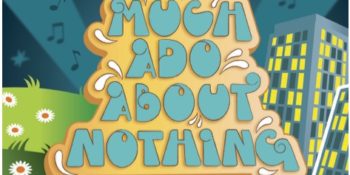
While this year’s Summer Shakespeare technically carries into fall (August 31-October 1), I don’t think it could be timed better. With the hot humidity tapering into warm comfort, we’ll be able to enjoy Shakespeare outside with better weather than ever; bringing layers or a blanket for after dark will be so much cozier than sweating the entire time. And, besides the regular variety of food trucks, Nashville’s Yazoo Brewing (a local favorite) has an exclusive release of an amber ale that will only be available during the production: Shake’s Beer.
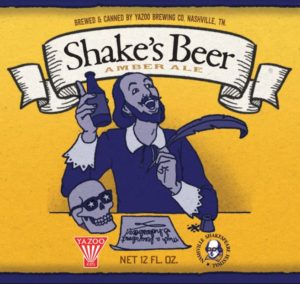
The play itself, Much Ado About Nothing, is a comedy about miscommunication: some enemies become lovers and some lovers become enemies, resulting in ridiculous chaos. One of Shakespeare’s most popular plays, this production is set in 1970’s Nashville.
As always, there are events before the show: lectures, concerts, and of course, the food trucks. Decide before you go if you want to bring a picnic blanket, a lawn chair, or sit on metal bleachers. If you want to sponsor the show more than the $10 suggested donation, there are VIP packages which provide reserved seating in prime view of the stage. Wherever you sit, don’t worry; both venues have adequate parking and bathrooms available for the public.
The play will be performed at The Yard at ONEC1TY in Nashville, August 31-September 24, and Academy Park in Franklin, September 28-October 1. For more information, go to Summer Shakespeare 2023.
In The Counterculture:
Kindling Arts Festival 2023
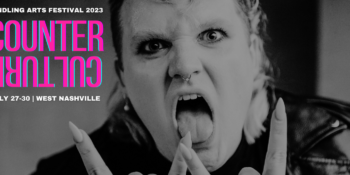
Introduction
Kindling Arts, self-described as “Nashville’s home for radically unique and independent artists,” had their 6th Annual Festival this July exploring the theme “Counterculture.” The 4-day performance festival featured 17 new works by local artists showcased at OZ Arts Nashville, The Darkhorse Theater, Nashville School for the Aerial Arts, The Barbershop Theater, and Global Education Center. Music City Review was able to send three reviewers to 4 performances this year: East Nashville Facebook Page: The Musical, Taboo, Silver Platter, and Bar Fight.
East Nashville Facebook Page: The Musical
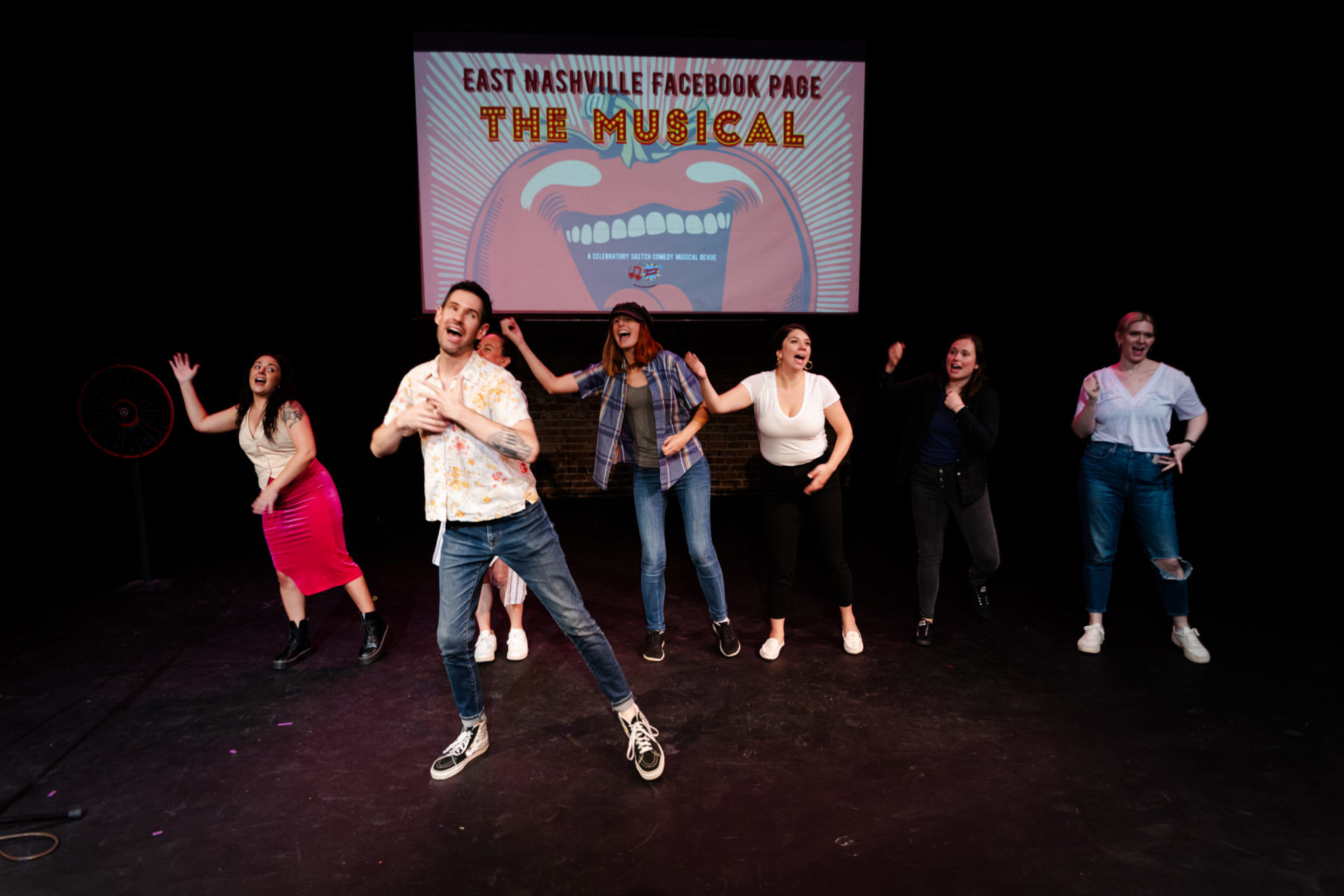
What got me to pick this event from the many Kindling Arts Festival events was the name: East Nashville Facebook Page: The Musical. My only concern was that I’ve never lived in East Nashville, so I might end up being on the outside of all the jokes, not getting clever but esoteric references.
I had no need to worry. Nothing is as universal as locals complaining about other locals, and Emma Supica and Cherry Bomb gave each musical skit context, picking moments that were innately funny and aided by the projector, which showed screenshots of posts, photos, and a clip from the local news when needed.
The songs were a lot of fun. My favorite’s chorus went “When you want to start drama, go to Jerry’s Artarama,” and was an argument between three local graffiti artists as they bought spray paint. Others included a duel between two taco shops, a trio of grocery stores singing to a shopper trying to get supplies during a winter storm rush, and a ballad ruminating on their hatred and love for the Facebook page, ending in a patriotic salute to the page admins.
In between each musical number they did musical roulette, spinning a wheel and handing a random post to ensemble member Seth Green, who then sang the post in an improvised song with Alex Dolezal, the musical director, whose keyboard playing was impressive and versatile. This was the only time when I wished the projector wasn’t being used; they showed the post on screen and it stole some of the thunder from Green’s hilarious performance.
I saw the Sunday matinee show, and we were asked to share a favorite post from the East Nashville Page that they hadn’t covered. A woman in the audience handed up a witty, angry post by someone who got yelled at while dog walking because a homeowner assumed she was going to let her dog poop in the yard without picking it up. It was in the following musical sketch that their improvisational and ensemble skills really revealed themselves, their dance moves quickly adopted by all members of the group, each actor with a ready joke given the space to take over. Much of the singing was excellent, and the ensemble members that didn’t have the strongest voices more than made up for it with their witty lyrics and sheer enthusiasm.
Each sketch was a good length, tailored to fit the joke, and avoided the common error of stretching things out to try and hit some arbitrary performance length. They nailed that “you had to be there” energy of live improv.
We laughed a lot, and when the show was over I was surprised that time had passed so quickly. Kindling Arts Festival not only provided an excellent lineup, but also exposed the audience to local talent doing live performances in our city. Although they didn’t advertise another performance of this musical, Cherry Bomb performs fully improv shows multiple times a month at Third Coast Comedy Club here in Nashville. Cherry Bomb – Third Coast Comedy Club. – GT
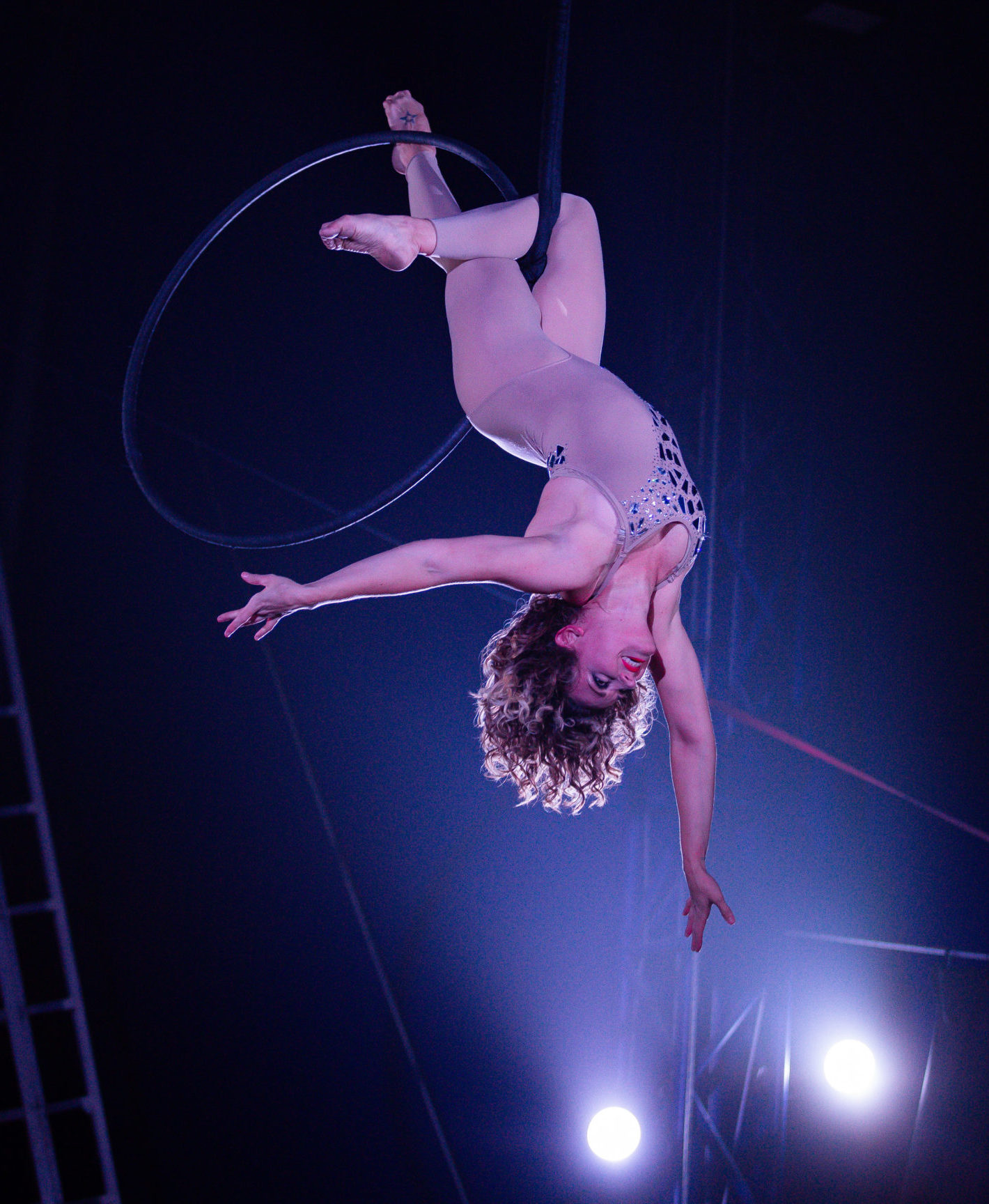
Taboo
I saw Suspended Gravity’s last performance of Taboo on Saturday, July 29th at the Nashville School for the Aerial Arts. In 13 acts over 90 minutes, the aerial and circus company explored the idea of what society considers taboo and how one can overcome the weight of society’s expectations with dance, music, aerial rope, silks, the lyra, and an aerial hammock. The venue was small and intimate, with chairs surrounding the performance area (closer to a ring than a stage). While the closeness of the artists was exciting, if you weren’t sitting in the front row, it was impossible to see the parts of the dance that were on the ground. Some of the performances were empowering, some light and funny, and others somber, but each contained a message for the audience about acceptance of others and acceptance of self.
In one performance titled “All Mirrors,” the artist is able to fling away what makes them “beautiful” according to society by discarding curlers, clothes, and makeup to just be themselves. In another performance titled “Gender Bent,” a man in a pink apron dances with a woman wearing a suit jacket. They remove these items and are left in matching black outfits, subverting gender norms, allowing themselves to be both, or perhaps neither, gender. In the last piece, two women run from typical expectations of everyday life, and find freedom up in the air as they twirl and flip together. As if the gods themselves were watching, the end of the show was punctuated with booms of thunder as a storm raged outside. It gave me the feeling that while the storm of expectations was waiting out there, in the aerial tent, I was safe and accepted. –BM
Silver Platter
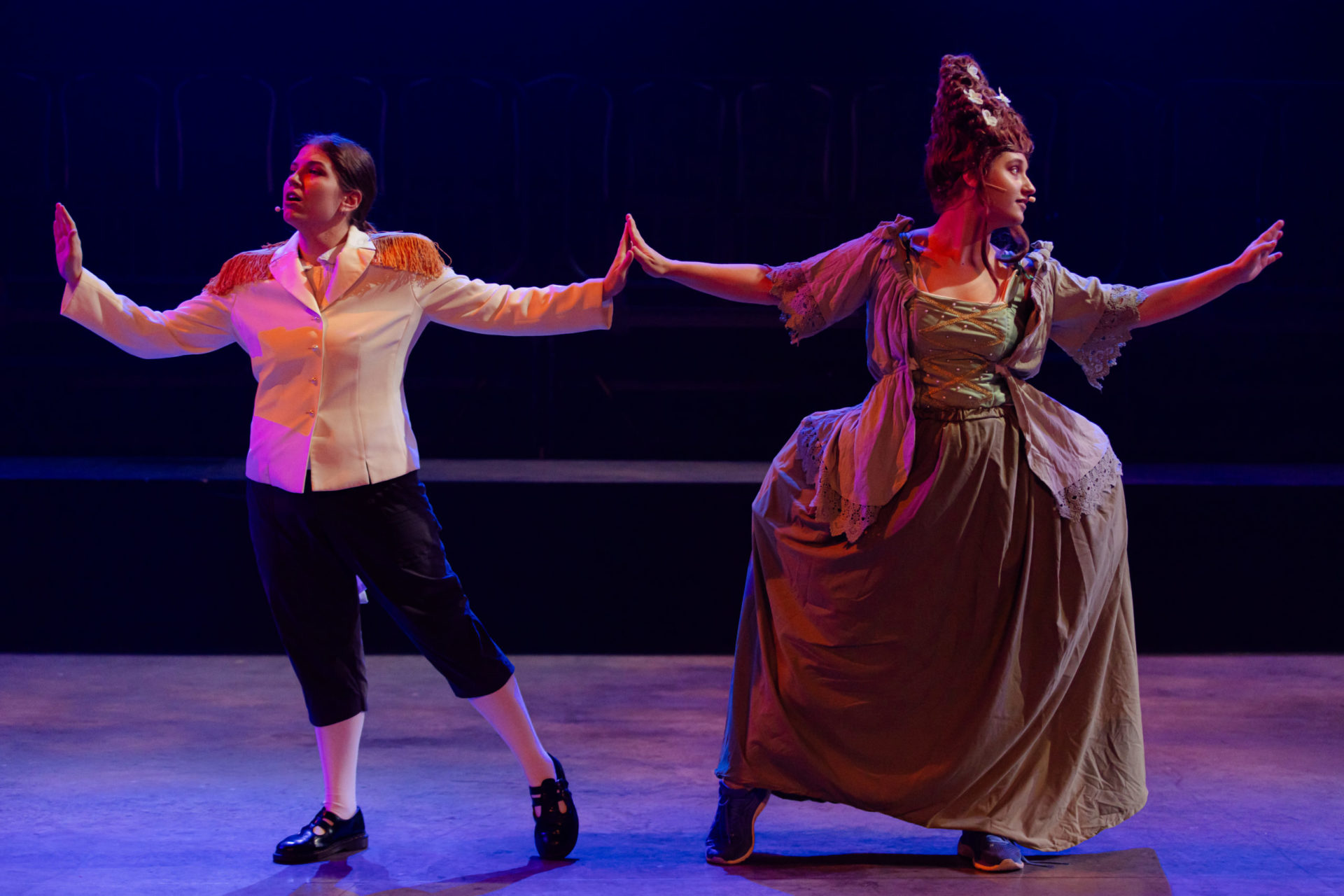
Amm Skellars, Nashville’s “only 100% Human Theater Company” opened the first festival evening on July 28th at OzArts Nashville, performing their smart, riotous, and hilarious, Silver Platter. A multimedia extravaganza, it is a kind of Baroque, hoop-and-wig pop musical that tells a Cinderella story in sneakers—the wig substituted for the glass slipper—you’d have to see it to understand. As advertised, it featured splendid gowns, a guillotine, a gavotte, and 5 great Jennys, but don’t be distracted by the gimmickry, there were real entertainment chops on display. Importantly, Amm Skellars has been characterized as a crew “of accidental theater kids who met through music but actively try each other’s disciplines on for size.” The result here is the kind of fresh, interesting innovations that often emerge from thoughtful collaborations between inspired artists.
As the lead “Wench Jenny” (our Cinderella), Hannah Dorfman (who also made the wigs) portrayed a charming charisma and sweet naivete that gave her that special little something. She was an excellent foil to her evil sisters right from the opening number “Jenny Say Caw” all the way through the symbolist lyrics of “Mr. Híbachí.” (Did I hear a dies irae in there somewhere?) If her acting and singing were right on point, her betrothal was to a Prince with excellent dance moves, played by a charming Mary Elizabeth Roberts. The Priest/Executioner (Ryan Wood) was dreadfully serious in a Benny Hill sort of way. The post-modern choreography, created by “Pole Jenny” (Ally Baker), carried the comedy deeply into the physical. For example, at one point, just at the mention of the potential of being Queen, the courtly dance shifted to Choko’s pelvic thrust. The awfully intense “Bad Jenny” (Mia Soza), the mysterious “Drum Jenny” (Rita Pfeiffer) and enchanting “Bass Jenny” (Camille Faulkner) filled out the fun, cheeky, hard-working and ridiculous quintet of Jennies–and I don’t mean mules!
Finally, I’d like to thank Cater Waiter 2 “Neil Maclean” for my Cheezit, it was crunchy. -JM
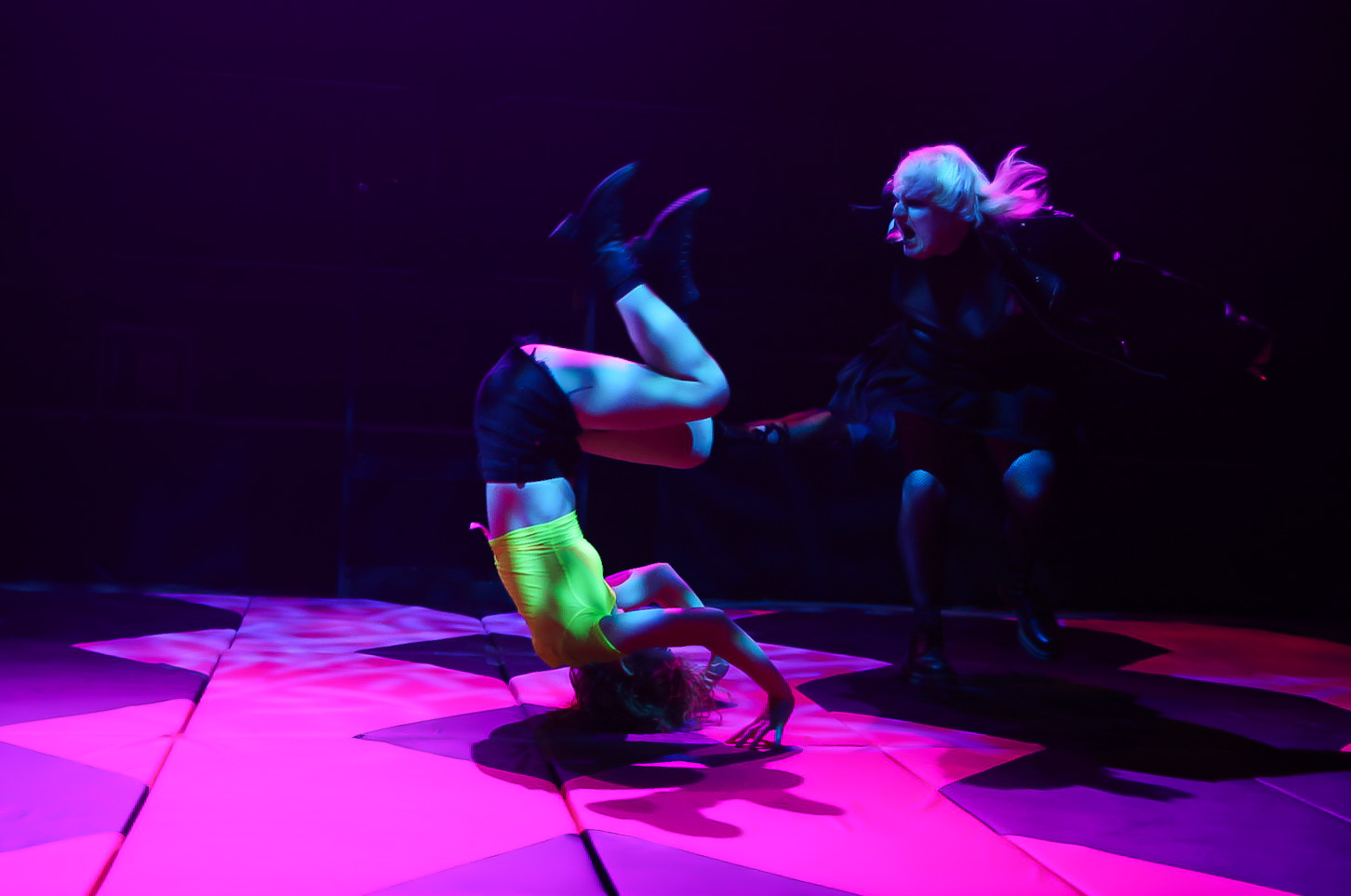
Bar Fight!
Next up was something completely different: Rabbit Effect’s Bar Fight! 2666: Broken Vows (Let the Bodies Hit the Floor), described as a “karaoke sci-fi opera set to 90s nu-metal featuring epic stage combat and a rockstar cast,” but I don’t think that tells it all either. Imagine if Frank-N-Furter from Rocky Horror grabbed up Alice Cooper and took him into future hell to perform heavy metal tunes as they watched the Orfeo and Euridice myth acted out in a World Wrestling Ring. Well, that doesn’t really do this show justice either. In any case, as Master of Ceremonies, Wanda Amanda Creech was striking, outdone only somewhat by Blake “Head in a Box…literally” Holliday. Their narration of events was part Southern Baptist preacher and part ring announcer. The beloved couple Eve Petty and Diego Gomez were endearingly naïve, sincere and rough-hewn; the perfect underdogs to the antagonist wrestlers Tavius Marshall and Justin Harvey. The fight choreography, by Harvey, Gomez and Lenin Fernandez was just great—funny, scary, and ridiculous all at once. Jennifer Whitcomb-Oliva’s performance as “Mother Death” (“Mother Death does not FUCK with Forever!”) was chilling and masterful—protecting the production from falling into the realm of simple camp.
Overall, there was an operatic organization to the production. The drama would proceed (pushed forward by Mother Death or the Head in a Box), leading to some kind of choreographed fight. Then, the scene would end with a soliloquy, as expressed by the performance of a 90s metal anthem. Standout performances included the ensemble’s crowd rallying performance of Drowning Pool’s “Bodies,” Gomez’s intimate performance of Nine Inch Nail’s “Hurt,” all of which was tied very nicely in a bow with Perry’s nearly over-the-top rendition of Evanescence, “Bring Me to Life” to close this amazing event. Afterwards, everyone went on down to the Cackleberry County fair for some victuals and to “Milk the Mayor” or vote for the “cutest Cackleberry.” In all it was a great night. -JM
Conclusion
Counterculture may be the theme for this year’s festival, but I think it could be said that it’s the theme for Kindling Arts, itself. Founded in 2018, Kindling Arts empowers diverse creators by providing a space for artists that are not part of the Nashville mainstream and allowing them to collaborate and share audiences. It is incredible how much this program is able to do with limited resources. It has been growing for six years, reaching larger audiences as it continues to push against the expectations of society. Music City Review is certainly looking forward to next year’s festival!

